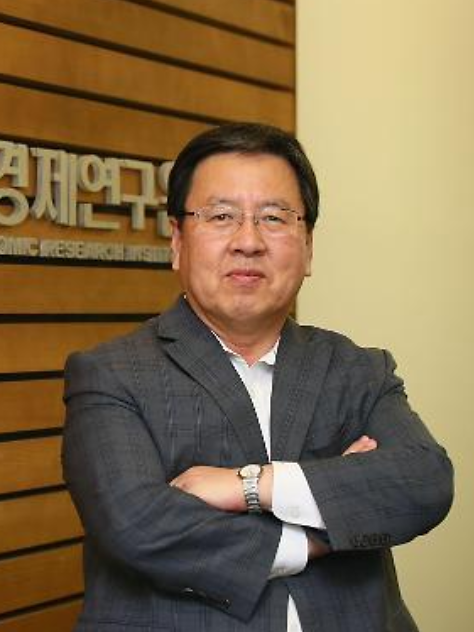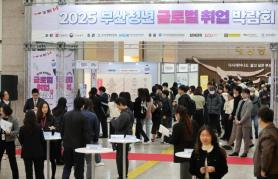
South Korea is wrestling with a quiet crisis: the steady erosion of job prospects for its young people.
The National Data Office’s latest employment report, released on Nov. 12, paints a stark picture. The employment rate for people ages 15 to 29 has been negative for a year and a half. The number of unemployed 30-somethings has climbed to 310,000 — a 22-year high — while roughly 400,000 people in their 20s are also out of work.
In total, more than 700,000 young adults in their 20s and 30s now find themselves idle. Add to that another 660,000 in their 40s and 50s, and the toll becomes even more sobering. The number of people who have given up looking for work rose to 366,000, up 21,000 from a year earlier.
These are not simply economic statistics; they are signals of a deeper social strain. And they reflect a risk that the country’s most promising talent will seek opportunity abroad.
On the surface, October’s data offers a glimmer of progress: the number of employed people rose by 193,000 from a year earlier. But the underlying structure is troubling. Monthly job growth has become volatile, dipping sharply late last year after the declaration of martial law and swinging widely since. Job gains of more than 300,000 a month — once routine — are now rare. With more than 300,000 students graduating from college every year, South Korea needs sustained, not sporadic, job creation.
The distribution of employment gains is even more concerning. Jobs increased among those 60 and older — by 334,000 — and modestly for those in their 30s, but they declined sharply among people in their 20s. Most new positions for seniors are government-subsidized, low-wage roles, a stopgap rather than a solution.
The sectors driving job growth underscore this imbalance. Health care and social welfare services added 280,000 jobs, followed by gains in culture, leisure, retail and education — all industries with heavy demand for older workers or public funding.
Meanwhile, agriculture, forestry and fishing shed 124,000 jobs; construction lost 123,000; and manufacturing declined by 51,000. Employment in construction and manufacturing has been falling for 18 and 16 consecutive months, respectively — an ominous trend for an economy long anchored by industrial exports.
Construction, in particular, has contracted for five straight years. Combined with faltering manufacturing, this slump has deepened job insecurity, especially for younger workers. Temporary jobs fell by another 55,000 in October, continuing a multi-year decline.
The government has responded with consumer coupons and cultural vouchers — measures that may provide short-term relief but little lasting impact. Officials have pledged to expand “quality jobs” for young people and strengthen support for vulnerable industries, while leaning on digital transformation and artificial intelligence to fuel a new wave of investment.
Yet the country’s more immediate challenge is to loosen the regulatory grip that has discouraged business investment for more than a decade. South Korea’s per capita income has now fallen behind Taiwan’s, reflecting stark differences in industrial strategy. Taiwan’s bipartisan “Semiconductor Act,” passed last year, offers substantial tax benefits for corporate research and capital investment.
In South Korea, similar proposals have stalled in the National Assembly, wrapped up in debates over exceptions to the 52-hour workweek for researchers.
South Korea’s per capita gross national income peaked at $37,898 in 2021 and has since drifted lower, hitting $36,624 last year. The coveted $40,000 threshold remains frustratingly out of reach, 11 years after the country crossed $30,000.
Despite slowing growth, recent legislation risks weighing the economy down further. Amendments to the Commercial Act passed this summer mandate cumulative voting and expand the appointment of outside auditors for large companies. The ruling party is now pushing additional requirements, such as compulsory share buybacks, while sidestepping more competitive measures like differential voting rights. These rules risk diluting controlling shareholders’ influence, potentially exposing domestic companies to foreign takeovers.
At the same time, powerful labor unions have gained additional leverage under new laws, including the contentious “Yellow Envelope Act,” which broadens the definition of employers and limits companies’ ability to seek damages for illegal strikes. The law permits subcontractor employees to negotiate directly with primary contractors and allows strikes over managerial decisions — steps that many businesses fear will intensify labor disputes. Without complementary reforms, such as alternative employment systems, job creation could suffer.
Rigid work-hour rules present another stumbling block. The 52-hour workweek has already curtailed flexibility in research-intensive industries. Proposals for a 4.5-day workweek remain detached from any meaningful discussion of productivity — which already lags behind other advanced economies. Seniority-based pay and talk of extending the retirement age to 65 could further tighten the labor market for young adults.
Fiscal strains compound these problems. With corporate tax revenues sagging amid a semiconductor downturn, some lawmakers have floated tax increases rather than reforms to improve the business environment. Meanwhile, government spending continues to swell — on regional currency programs, basic income for farmers and fishermen, and renewable energy projects. The national debt-to-GDP ratio is projected to reach 58 percent by 2029 and could surpass 80 percent by 2040.
In such an environment, companies and capital are increasingly looking abroad. That exodus threatens South Korea’s ability to generate the high-quality jobs young people need.
Reviving the country’s job engine will require a fundamental shift: dismantling regulations that restrict business activity, reining in excesses that discourage investment, and confronting the anti-business sentiment that has hardened across politics and society. Only then can South Korea begin to restore confidence — and opportunity — for a generation losing both.
-Ph.D. in Economics, University of Manchester
-Former Director, Monetary Research Division, Bank of Korea
-Former Deputy Director, Korea Institute of Finance
-Former President, Korea International Finance Association
* This article, published by Aju Business Daily, was translated by AI and edited by AJP.
Copyright ⓒ Aju Press All rights reserved.



